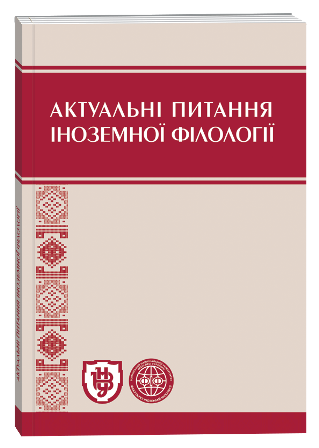CODIFICATION OF THE WENTY STYLE («文体») IN CHINESE LINGUISTIC IDEOLOGY
DOI:
https://doi.org/10.32782/2410-0927-2022-16-14Keywords:
text forms, classification, stylistics, style, codification, standardization of languageAbstract
The article is devoted to the analysis of the processes of codification of the “wenti” style in the ancient Chinese languages Wenyan and Baihua. Methodologically important for the study is the consideration of the forms of the “wenti” style and the analysis of the concepts of its codification, the manifestation of an authentic system of means of this style. The author analyzes the processes of succession, ideological and educational functions of the Chinese philological tradition, which were the main factor in the introduction of codification of styles. and, on the other hand, depended on the already formed ideological, educational, ethical and aesthetic aspects. The use of styles is based on certain forms of text. Analyze and consider the basic concepts of codification of styles, formed by the traditional worldview of the Chinese people. In ancient Chinese linguistics, at least four terms of style are defined. The purpose of this scientific research is to study the codification of styles as forms of traditional texts of the language of wreaths and the processes of stylistic codification of ancient China. The aim of the work is achieved through the review of the literature, which is the carrier of codification of styles, the study of the history of the development of features of text styles in Wenyan and Baihua and the analysis of their structural features. All forms of literary text that were part of the group “wenti” were known from the first works on stylistic codification, continued to exist over the centuries and were noted in outstanding works on the stylistics of the Qing dynasty, which testifies to the traditional and hereditary philological tradition codification of forms of artistic text. The history of stylistic codification provides important material for understanding the linguistic phenomena of the Chinese language, which provides an impetus for further research into the phenomena of Chinese stylistic codification.
References
Chen Zhenpeng, Zhang Peiheng. Dictionary of Ancient Chinese Appreciation (Part 1). Shanghai : Shanghai Dictionary Publishing House. 1997. 565 р. (in Chinnese).
Cui Linfang. “Elegance and Beauty” of Lu Ji’s “Wen Fu”. Yuncheng : Poster of Yuncheng College. 2013, 185 p.
Guo Yingde. On Chinese Ancient Stylistics. Beijing : Peking University Press. 1995. 224 p.
Li Nanhui. Anthology of Ancient Chinese Stylistics (1900–2014). Beijing : Peking University Press. 2016. 504 p.
Liu Xiaoming. The Interaction between Drama Style and Drama: An Analytical Approach to Traditional Chinese Opera. Guangzhou : Guangdong Higher Education Press. 2020. 362 p.
Lu Yonglin, Zhang Jian, Wang Chunhong. Selected Notes on History of Chinese Literary Theory and Criticism. Beijing : Peking University Press. 2013. 281 p.
Pu Liben. An Outline of Ancient Chinese Grammar. Beijing : Language Press. 2005. 267 p.
Wang Li. Chinese History Manuscripts. Beijing : Zhonghua Publishing House. 2009. 714 p.
Wang Yousheng. An Introduction to the Classical Study of Ancient Literature in the Republic of China. Shanghai : Yuelu Publishing House. 2010. 462 p.
Yao Nai. Compilation of ancient Chinese dictionaries. Shanghai : Shanghai Ancient Books Publishing House. 1998. 799 p.







